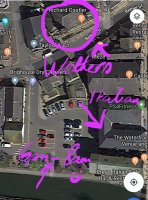R
Resfeber
VIP Member
Perhaps this will help
130watts / 12volts = 10.8 amps ( say 11amps)
Would be the current draw by the 12volt charger that you buy for you laptop.( which will transform 12v to 19.5volts that your laptop needs to charge its battery correctly).
Your leisure battery will be rated as able to deliver about 80 amps continually for 1 hour.
So your charger would flatten your leisure battery in 80/11 = 7.27 hours assuming no other usage.
Therefore all you need to find out is how long it takes to charge your laptop from say 20% to 100% and how long you can run on a 100% laptop battery to 20%.
Think you will find that your leisure battery can stand this extra load as you will charge for around an hour and get 2 to 4 hrs use from charged laptop battery.
130watts / 12volts = 10.8 amps ( say 11amps)
Would be the current draw by the 12volt charger that you buy for you laptop.( which will transform 12v to 19.5volts that your laptop needs to charge its battery correctly).
Your leisure battery will be rated as able to deliver about 80 amps continually for 1 hour.
So your charger would flatten your leisure battery in 80/11 = 7.27 hours assuming no other usage.
Therefore all you need to find out is how long it takes to charge your laptop from say 20% to 100% and how long you can run on a 100% laptop battery to 20%.
Think you will find that your leisure battery can stand this extra load as you will charge for around an hour and get 2 to 4 hrs use from charged laptop battery.



















